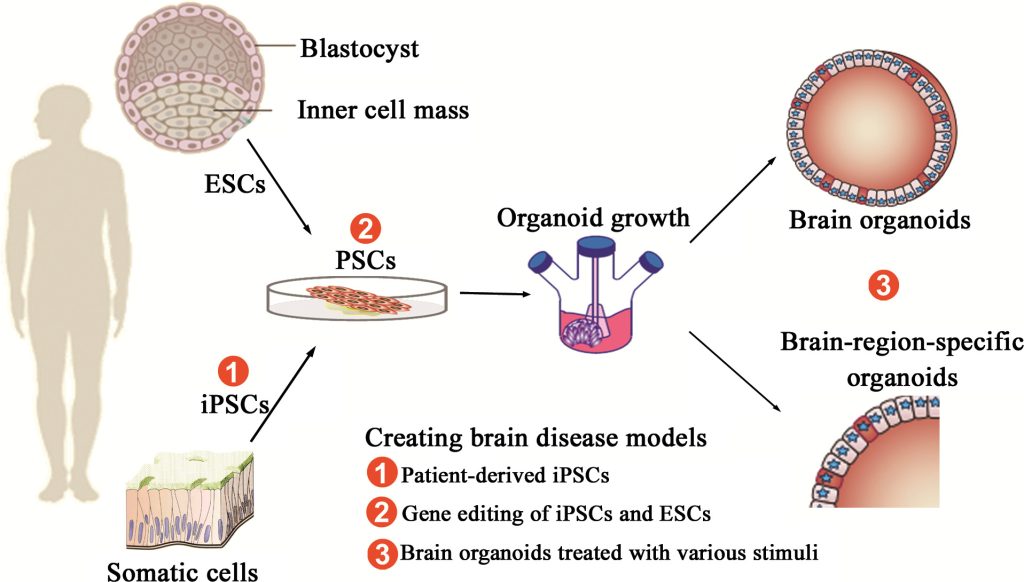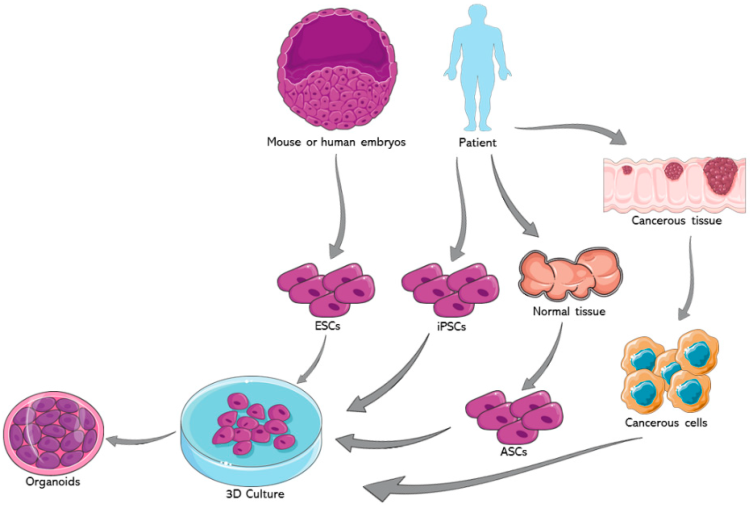The Essence of Organoids
Organoids, often misunderstood as mere miniature versions of organs, are far more complex entities. These structures, such as cerebral organoids, represent significant advancements in biomedical research but still have a substantial distance to cover before they can fully replicate the functions of their in vivo counterparts. Much foundational research remains to be done, requiring time to accumulate knowledge and develop technical frontiers.
The Complexity of the Brain
Without a doubt, the brain stands as the most challenging organ to reconstruct. This difficulty arises not only from its intricate architecture but also from the ethical dilemmas surrounding the reconstruction of a complete brain. Scientists navigate these waters with care, pushing the boundaries of what is possible while acknowledging the moral implications of their work.
The Marvel of Stem Cells
Stem cells possess an extraordinary potential to differentiate into various cell types. By meticulously selecting specific sources of stem cells and fine-tuning their growth environments, scientists can cultivate organ-like structures in vitro, known as organoids, that resemble organs such as the liver, blood, and even the brain—serving as vital tools for medical research and experimentation.
The Limitations of Current Organoid Models
At present, most organoid models represent only single tissue types. However, the development and functionality of organs in the human body typically depend on the intricate interactions between different tissue types, such as the collaboration between neural, muscular, and skeletal systems. Recently, researchers led by Xiang Fei at the Shanghai University of Science and Technology have made a breakthrough by creating the first self-organizing human neuromusculoskeletal organoids (hNMSOs), published in Cell Stem Cell on December 9, 2024.
From Stem Cells to Organoids
In early embryos, there exist cells known as ‘pluripotent stem cells’ capable of differentiating into all cell types derived from the three germ layers. As development unfolds, the endoderm gives rise to digestive and respiratory systems, the mesoderm develops into muscle and bone, and the ectoderm forms the nervous system and epidermal structures.
With advancements in technology, scientists can now reprogram somatic cells back into a pluripotent state, allowing them to be cultivated and differentiated as needed. To replicate interactions among various organ tissues, researchers traditionally assemble and fuse pre-cultured single organoids. However, in this study, through a strategy of co-development, the team successfully facilitated the simultaneous growth of muscular, skeletal, and nervous tissues, elegantly simulating the self-organizing processes of life.
Understanding the Neuromusculoskeletal Organoids
Cultivation Processes
In the cultivated organoids, which measure just a few millimeters, researchers identified the cellular compositions of these three tissue types and revealed processes such as neurogenesis and the neural control of muscle contraction. They also utilized this model to explore the neuromusculoskeletal axis disruptions in arthritis, shedding light on the structural and functional changes in neuromuscular systems following pathological bone degeneration.

The Importance of hNMSOs
When examining how hNMSOs compare to real human tissues, it becomes evident that they consist of three distinct areas: a neural region at one end, a skeletal muscle area in the center, and a skeletal region at the opposite end. These areas respectively mimic the human spinal cord, skeletal muscle, and bone tissues. Through structural morphology, gene expression analysis, and comparisons with human tissues, the identity of these areas has been clearly delineated.
A Technical Breakthrough
The primary technical advancement of hNMSOs lies in their construction; unlike previous strategies that assembled different organoids, hNMSOs utilize a multi-lineage co-development approach to yield three distinct tissue types within the same growth conditions. Remarkably, researchers observed a significant intrinsic self-organizing capability in the cells, allowing for the independent formation of distinct regions without external guidance while maintaining their interconnections.
Applications and Future Directions
Challenges in Disease Modeling
hNMSOs stand poised to serve as a robust model for studying diseases linked to the interactions between nerve, muscle, and bone tissues. For instance, arthritis leads to bone tissue degeneration and often results in muscle dysfunction, making it difficult to study related pathological changes in human models. The team explored how inflammatory cytokines can induce localized bone alterations, revealing abnormal structural and functional changes in neuromuscular junctions. hNMSOs can also be instrumental in investigating various neuromuscular disorders, such as amyotrophic lateral sclerosis (ALS) and spinal muscular atrophy (SMA).
Future Research Trajectories
Future inquiries into hNMSOs will delve deeper into lineage development and the regulation of cellular self-organization. From a medical perspective, these organoids offer the potential to elucidate complex disease mechanisms, thereby paving the way for novel intervention strategies.
Ethical Considerations in Scientific Exploration
Navigating Ethical Dilemmas
The challenge of developing complete organs from stem cells is a profound one. Achieving this ambitious goal requires an interdisciplinary approach, integrating biotechnological advancements with ethical foresight. The brain, arguably the most complex organ, poses unique challenges—not solely scientific but also ethical.
In discussions surrounding these studies, careful consideration must be given to the functional complexity of cerebral organoids, particularly in regard to advanced cognitive functions such as thought, memory, and consciousness. While current models are far from replicating such complexities, the ongoing ethical dialogue is crucial as technology progresses, particularly regarding neural organoids.
Public Misconceptions
There are many misconceptions among the public about stem cell research and organoid technology. Notably, organoids are not merely simplified versions of organs; they remain significantly distant from fully functional in vivo structures. Continued foundational research is necessary, and the journey of exploration will take time to push the boundaries of this innovative technology.
Nonetheless, existing organoid technologies already demonstrate vast applications, showcasing potential in revealing mechanisms of diseases and identifying therapeutic targets. Additionally, organoids of certain tissues, such as the retina, intestines, and liver, have already made strides in regenerative medicine. The continued evolution of organoid technology promises an exciting future, ripe with possibilities.


















































Discussion about this post